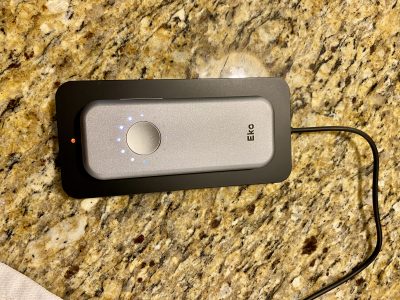That’s one of my favorite medical aphorisms, taught to me by Dr. Peacock in El Paso. He was one of the trauma surgeons there, and it nicely summed up an approach to medical care in the acutely traumatized.
I thought that when I read this:
Army halts use of battlefield first aid item after test found it might cause blood clots
By PAULINE JELINEK | Associated Press Writer
- 10:25 PM CST, December 23, 2008
WASHINGTON (AP) — Until more testing can be done, Army medics are being told to stop using a new product just sent to the war front to help control bleeding among wounded troops.
Officials were in the process of distributing some 17,000 packets of WoundStat, granules that are poured into wounds when special bandages, tourniquets or other efforts won’t work. But a recent study showed that, if used directly on injured blood vessels, the granules may lead to harmful blood clots, officials said Tuesday.
To recap: a medication to be used as essentially a last resort when a trauma patient is bleeding to death cannot be used because …it might cause blood clots. Bleeding that cannot be controlled with direct pressure, tourniquets or the newer ‘combat gauze’ with pro-coagulants built in.
I have to say that, were it me in that situation, I’d risk some clots elsewhere to get clots to keep me from literally bleeding out. But that’s just me.
It’s commendable the Army takes the medical care of its troops seriously, but there’s a disconnect in this case.




So the “sammich” generation is not seriously injured? :) Love the quote.
This appears to be a case of the treatment working too well.
I have to agree with you. The clots can be treated in the hospital – if the patient survives to the hospital.
The loss of blood tends to be something that does not respond well to anything except control of the bleeding.
Usually the military is better at appropriately identifying priorities than that.
Guess they figured that the bleeding was less important. After all, it’s a proven fact that all bleeding stops….eventually.
It might be that, if the product is used judiciously, it could be effective and safe. In the field, with blood gushing everywhere, it probably gets used with wild abandon, and so a limb is lost to vascular occlusion that might have been saved.
Battlefield first aid is generally not a joke. Gimme me the clot producing medicine thanks…
I use this phrase most every shift. Thank you Dr. Peacock
Hey doc,
I’m en EMT currently who’s joining the Army this as a 68W (combat medic). I have a mentor who’s currently a 68W, and when this report came out he and I had a discussion about it….the general conscensus is that it’s a ridiculous ban on a product that saves lives.
If I am in the field and I don’t have any other way to control bleeding, you bet your ass I’m going to use a product that buys me and my patient some time – enough time to get them to a facility where their issues can be addressed in a controlled environment. Hospitals and physicians can mitigate emboli in a live patient. They can’t in a dead one.
The REAL kicker to this is that there haven’t been any problems reported with Woundstat in HUMAN subjects. No deaths, no life threatening emboli…by all accounts it does what it’s supposed to do: produce clots that can prevent your patient from bleeding out on you before you get to a hospital or treatment facility. The only “issues” that have been reported have been in animal studies.
It does what it’s supposed to do, and we use it as a last resort. I really don’t see that as a problem big enough to warrant removing it from use.
Come on, now…as a fellow vet, we all know that there doesn’t HAVE to be a REASON–its just Army POLICY!!!